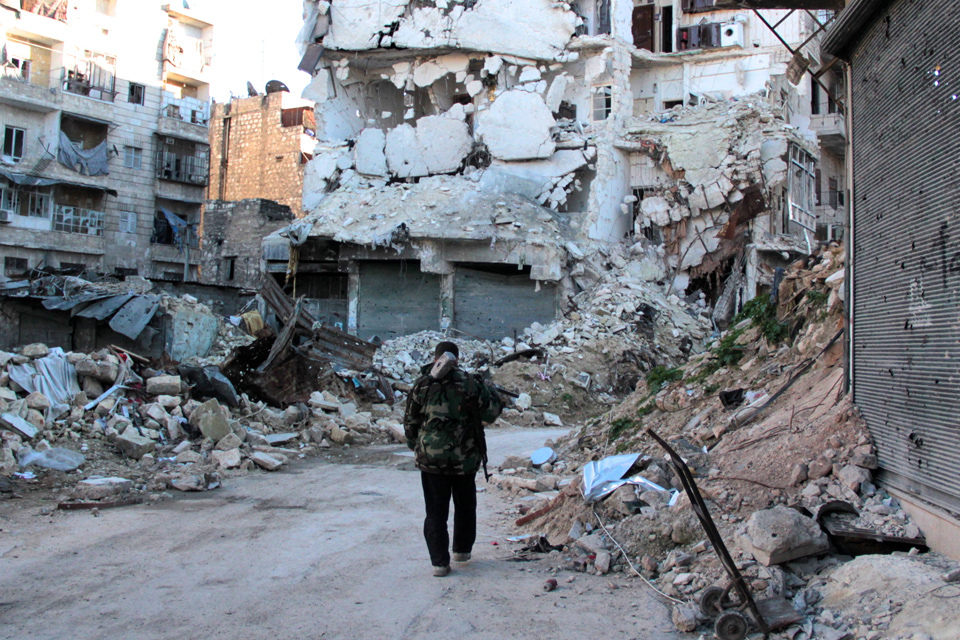At dawn on 23 September, Syrian and Russian fighter jets roared over eastern Aleppo, bringing new death and destruction to the city’s besieged inhabitants. The attacks followed several days of relative quiet, but the ensuing days and nights were worse than ever. The chaos makes it difficult to determine exactly how many were killed, but between 50 and 70 people lost their lives in the course of that one morning. The death toll is not only difficult to confirm; it is also difficult to comprehend. When the United Nations stopped counting in 2014, the war had taken at least 300,000 lives. A more recent report in February 2016 from the Syrian Center for Policy Research, however, put the death toll as high as 470,000. In any event, these figures mean that the war in Syria is the deadliest conflict since the end of the Cold War. Research by institutions including PRIO has shown a decline in the number of conflicts worldwide since the fall of the Soviet Union. Statistics depict a world that has become more peaceful, where fewer people are dying as a result of war. The war in Syria shattered this trend.

Aleppo under siege. PHOTO: CC2.0
Syria, which was famed for its architecture, cuisine and long, proud history, has been reduced to a crime scene. Aleppo, which before the war was Syria’s largest city, and which for centuries has been an important hub for trade and industry, is now one of the worst places to find oneself anywhere on Earth. With Russian and Iranian help, Assad’s forces have encircled the whole of rebel-controlled eastern Aleppo. Approximately 250,000 people are trapped in the city with nowhere to go. The relentless besieging of cities and neighbourhoods and the slow starvation of adults and children has become one of the regime’s gruesome specialities. Another speciality is barrel bombs. Packed tight with explosives, shrapnel and nails, and weighted with concrete, these are dropped over civilian populations with the aim of causing maximum death and destruction.
The rules of war
Places that used to be sanctuaries are now fair game. What used to be safe is now deadly dangerous. People dare not visit hospitals and clinics, as these have become the regime’s death traps. Hospitals are targeted for bombing, and every day emergency aid is prevented from reaching people in need. Last week’s bombing of an aid convoy that was bringing food, medicines and blankets to 78,000 besieged civilians joins the ranks of egregious examples of the Assad regime’s contempt for the rules of war. The Assad regime is responsible for over 90 per cent of the deaths in Syria. Nevertheless, priority is given to the fight against IS. Paradoxically enough, it is easier – from the perspective of international law – to wage war against IS than against Assad. In other words, as the philosopher Lars Christie has pointed out, there are good reasons to debate the extent to which international law is actually protecting civilians in this situation.
The bombing of the aid convoy was the final breach of a ceasefire that had been intended to stabilize the situation. But with no mechanisms to enforce the ceasefire agreement, and significant scepticism about the parties’ abilities and, in Russia’s case, willingness to control their respective forces on the ground, the ceasefire never had a chance of halting the war. And since the regime is now on the offensive in Aleppo, why would it want a ceasefire anyway? Rather it is choosing to wreak even more destruction.
Spoiler Alert
The problem of so-called “spoilers” in peace processes was first described by the American researcher Stephen John Stedman in an academic article published in 1997. Stedman was writing about peace negotiations, but the concept of spoilers becomes relevant long before a negotiating table comes into sight. In Syria there are many leaders and parties who see themselves as having more to gain from continued war and conflict than from peace and reconciliation. No one has any idea how Syria will look after the war, where the borders will be drawn, who will end up in power, and all the warring parties seem to share a fear that the future will see them with less power and influence, and their enemies with more. In that case the most important thing is not to win, but to damage the enemy as much as possible. And the more people there are who have a shared interest in spoiling the chances of peace, the longer the war will continue.
Prolonged war
These poisonous dynamics have made several appearances already. Whenever one of the parties has seemed to be losing ground, external parties have supplied that party with new resources. Research shows that the duration of a conflict is dependent on the number of parties involved; the parties’ relative strengths; the extent of involvement by external parties; and the porosity of the borders of the conflict-ridden area. This checklist is bad news for Syria. For although all the parties are suffering, there are still multiple parties who have many more people to sacrifice. The sponsors of the conflict remain safe in Moscow, Tehran, Damascus, Ankara and Riyadh, while sending weapons, money and new soldiers to the battlefield.
The war in Syria has now lasted as long as World War II, and there is no sign of it ending. In Europe we have newly constructed fences and an amended framework, so perhaps the consequences of the war will not encroach so closely on our lives as they did last year, when some of the refugees suddenly turned up on our doorstep. Yet another winter is on the way. All sounds will be muffled in cotton wool. An alarm from Aleppo is sounding somewhere in the far distance.
- This text was first published in Norwegian in the daily newspaper Dagsavisen 27 September 2016: ‘Alarmen fra Aleppo’.
- Translation from Norwegian: Fidotext